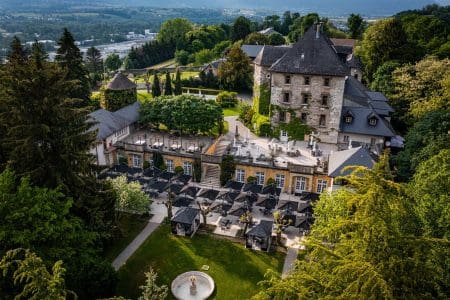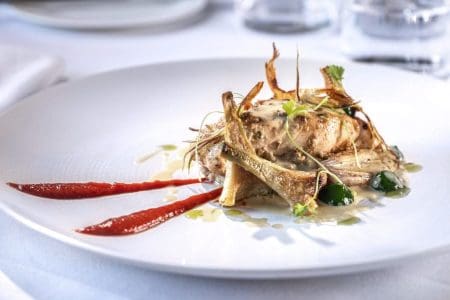In the industrial shadows of north-eastern France, Mark Bibby Jackson travels through the French Ardennes to discover a region of resilience, strong sense of community, and devastating natural beauty — from steel forges to stork nests.
I often say it is when you least expect it you get the most from travel. This certainly applies to the French Ardennes, a region I knew little of before visiting it earlier this summer. An overnight camp on the Belgium side of the border in my youth and endless patés in my meat-eating days my only previous knowledge of the region.
French Ardennes Day One: Following the River Meuse

We begin our three-day journey through the Ardennes in Bogny-sur-Meuse, once a crucible of industry, now home to an understated Metallurgy Museum perched beside the river Meuse. Inside, the wonderful Nadia talks us through the region’s proud, soot-stained legacy of iron forging. The museum is housed in the Levrézy factory which used to manufacture wagon bolts and fittings. It was transformed into a museum in 2009.
An excellent film, reminiscent of British pit village documentaries, shows now the work transformed from men with hammers to machines with precision. The sense of the community spirit always found in mining areas resounds, although I suspect that this at threat from the advent of computerised operations.
The museum has an interesting collection of machinery and photography, freestanding in the former factory. Temporary exhibitions add surprising layers — in our case, a Mexican artist who channels the spirit of Diego Rivera and Frida Kahlo, both communists who understood the importance of community and industry.
Viewpoints and Legends

The museum stands on the banks of the Meuse in the most beautiful countryside. Nearby is a monument to the Four Sons of Aymon.
Legend has it the siblings fled Charlemagne’s wrath after one of them, Renaud, had killed the emperor’s nephew during a chess game. Their necessary escape led them to these forested hills, aided by their magical horse, Bayart.
A short walk along a walkway leads to the monument near the imagined site of Castle Montessor. Along the way you can discover more about the legend. At the top of a short climb the views down the river are impressive.
From Bogny, we snake our way along the Meuse towards Monthermé. The river bends into a perfect horseshoe at Boucle de la Meuse (Meuse Loop), which is best admired from the clifftop perch of La Roche à Sept Heures. A short climb through gentle woods rewards me with a view lifted straight from a tourism brochure.
We lunch on the banks of the river at Monthermé, enjoying the views as we munch on quiche and baguette from a boulangerie in the town. The simplicity of the moment is perfect.
Haybes, Givet and Rocroi
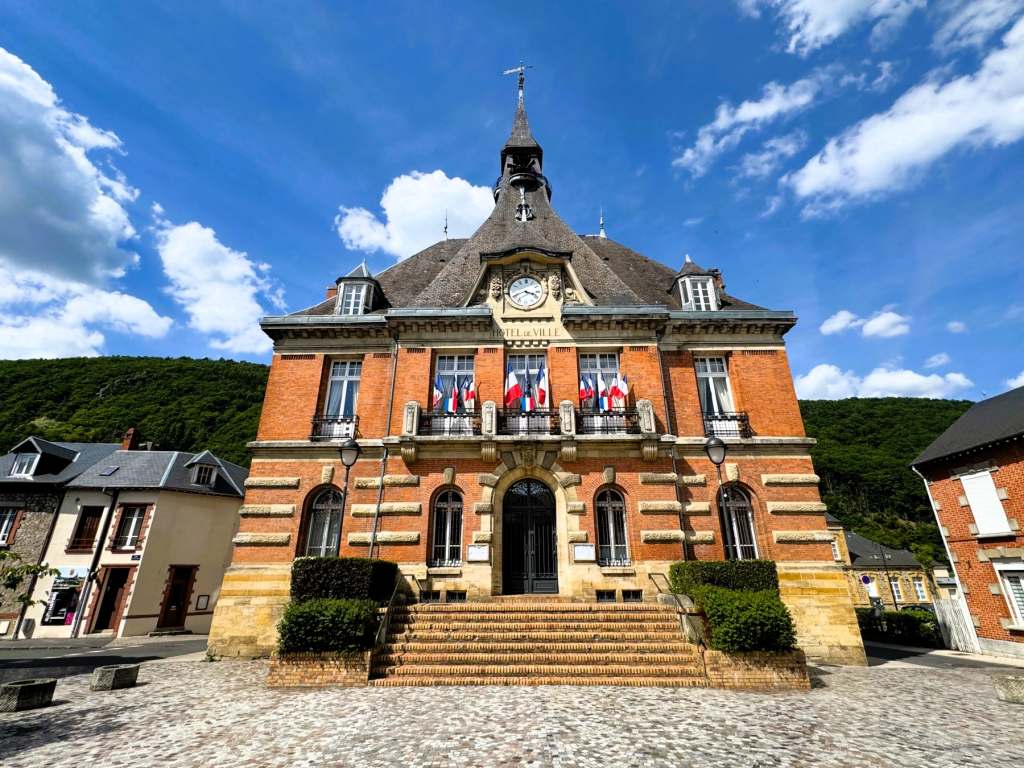
The Meuse winds on to Haybes through perfect countryside. Now a peaceful riverside village, in the First World War German troops razed it almost entirely. Thanks to the efforts of the French government and a British reconstruction mission, the village was slowly brought back to life in the 1920s. Today, its 1927 town hall, rebuilt church and mural memorials stand as quiet reminders of resilience and cross-channel solidarity. It also has a wonderful microbrewery, the Brasserie Ardennaise de Haybes, if you wish for a cooling pint on the banks of the river.
Further north along the Meuse, Givet rests in the shadow of the 16th-century Fortress of Charlemagne. Unlike the storytelling romance of the Aymon monument, Charlemagne’s fortress speaks of real siege and strategy — and it remains defiantly watchful, on the border with Belgium.
We retrace our steps back to our gîte, stopping at Rocroi, a star-shaped town created with geometric precision. The town’s fortifications remain intact, although are nowhere near as imposing as at Givet.
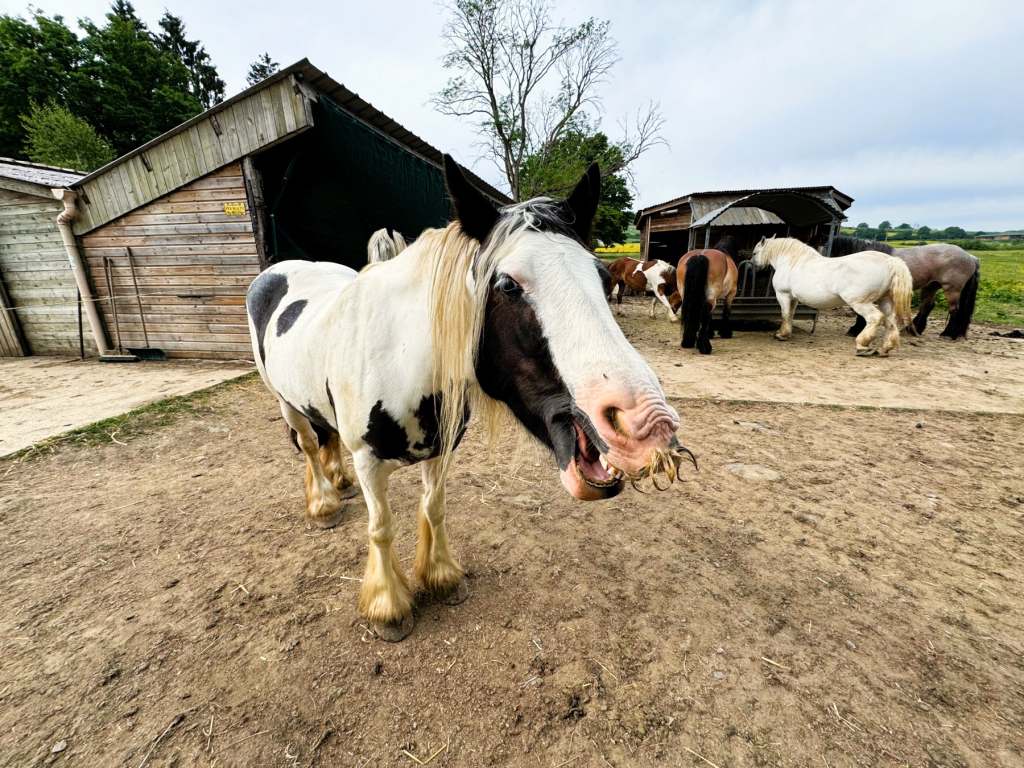
At the centre lies a charming square where the pub Le Napoli and its charismatic barman, Teddy, serve cold, cheap pints of Leroy beer alongside conversational warmth – the perfect opportunity to practice my stilting French. Sitting in the square at sunset, starlings fluttering above, a lone bell tolling 7, I feel history has pressed pause.
That night, we stay at the Gîtes des Prés in Haudrecy, my first time in a gîte. We dine in our garden while horses munch away on their hay next door. It is a beautiful spot beside a small river, and the perfect place to rest.
French Ardennes Day Two: Poetry and Puppets, Fortresses and Faith
Charleville-Mézières beckons on day two. The capital of the Ardennes is most famous for its melancholic son: Arthur Rimbaud, enfant terrible of French literature. A small museum keeps his spirit alive. The city also has its World Puppet Theatre Festival, held every two years. The next is in September 2025.
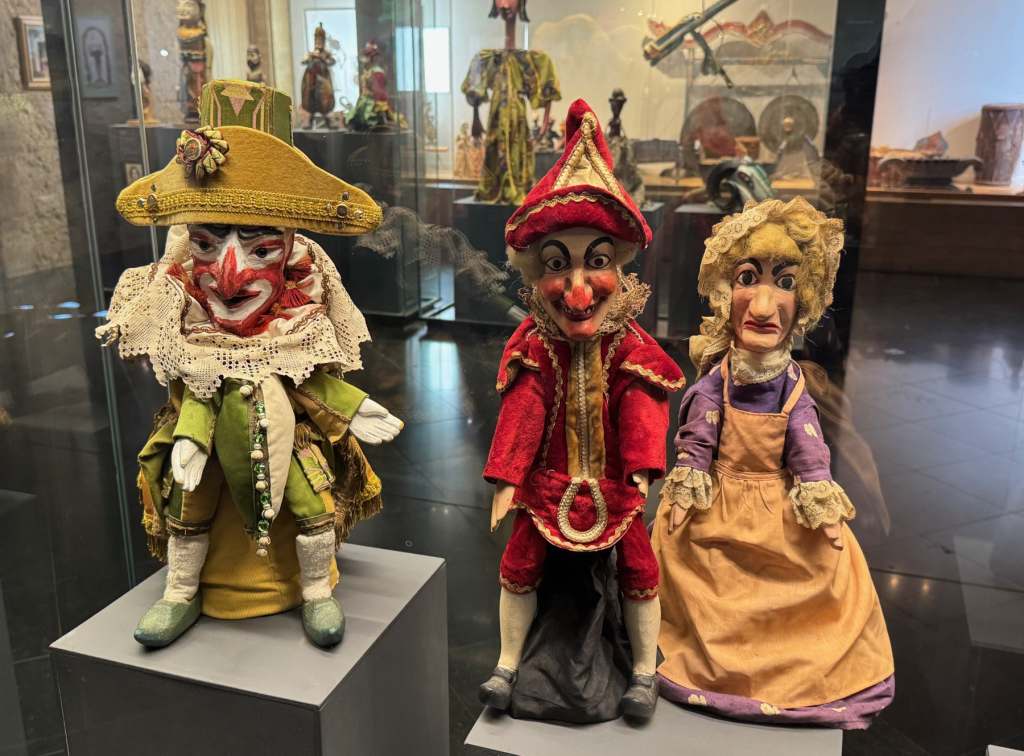
We dine at L’Antre Ducale located on one corner of the Place Ducale, the glorious cobble-stoned heart of the city. It’s a cousin of Paris’s Place des Vosges.
This is the finest meal of our brief trip to the French Ardennes. I enjoy a wonderful tuna while my mother devours her steak. The setting is beautiful medieval as is the town.
After lunch I visit the town’s Musée de l’Ardenne, which provides an overview of the region from prehistoric flint tools to fine art, industrial history and, naturally, puppets.
Sedan Castle and Mouzon
After lunch, we head east to Sedan, home of Europe’s largest fortified medieval castle.
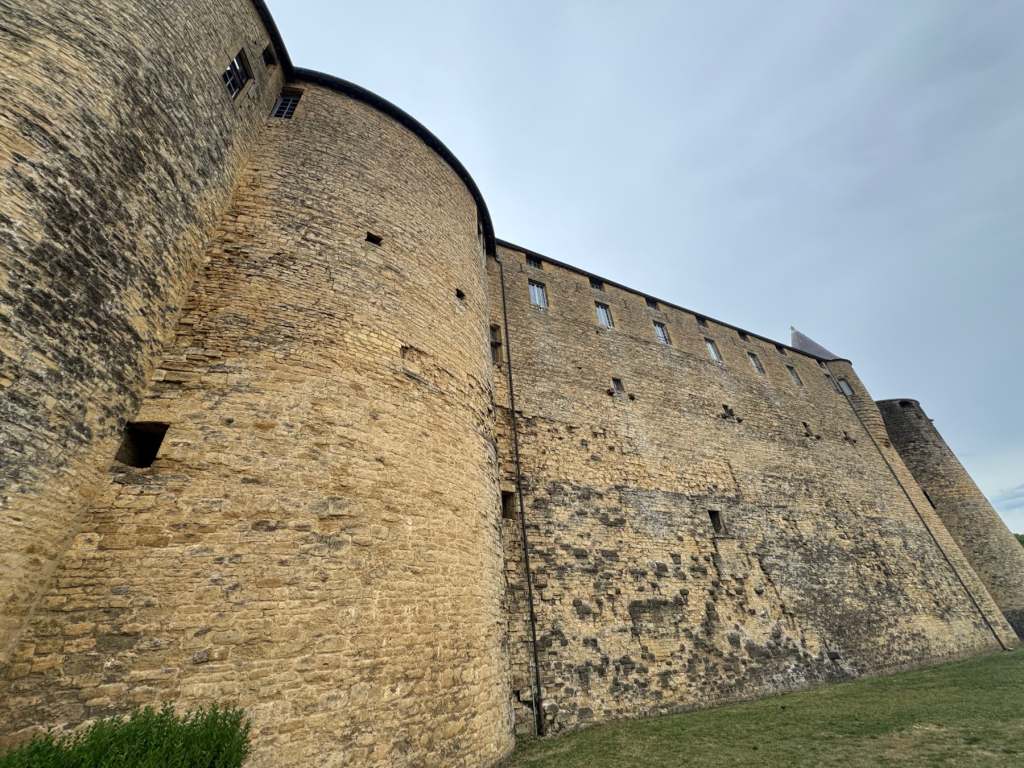
Built in the 15th century and extended by the Protestant Prince Robert de la Marck, Sedan Castle (Château fort de Sedan) is the largest medieval fortress in Europe. An impressive multimedia introduction in the dungeon greets me.
The castle became a Huguenot haven in the 16th century, fell to the French crown in the 17th, and by 1870, was the scene of a crushing French defeat in the Franco-Prussian War. Sedan became a prison, then a memory.
We end day two in Mouzon, dominated by the Abbatial Notre-Dame, a 12th-century monastic church. It’s late afternoon, and light slants through high windows, bathing stone in gold.
French Ardennes Day Three: Gîtes, Horses and the Bliss of Nothingness
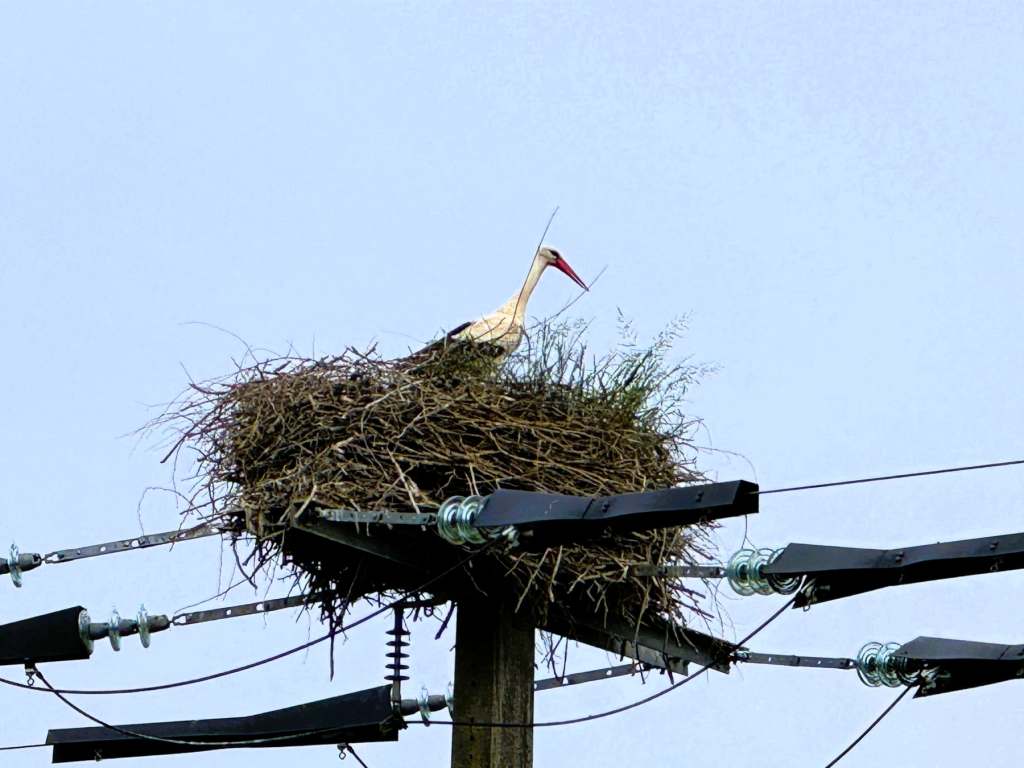
On our final morning, I sip coffee in the garden of our gîte. Our hostess Dominique shares stories in French of her mix of French Ardennes, Belgian and Boulogne horses, and of the white storks, who arrive each year in March and leave around August. Perched in large nests atop pylons, their croaking calls resemble wooden football rattles.
War and Peace
Our final day takes a solemn turn at the Museum of War and Peace in Novion-Porcien. It’s a museum built not just for military historians but for people like my mother — whose grandfather and his two brothers were all lost to the First World War.
Together, we wander through trenches recreated in dim lighting, uniforms neatly displayed, private letters exposed on the walls. It is neither bombastic nor sentimental. Just a place that remembers a time we should never forget.
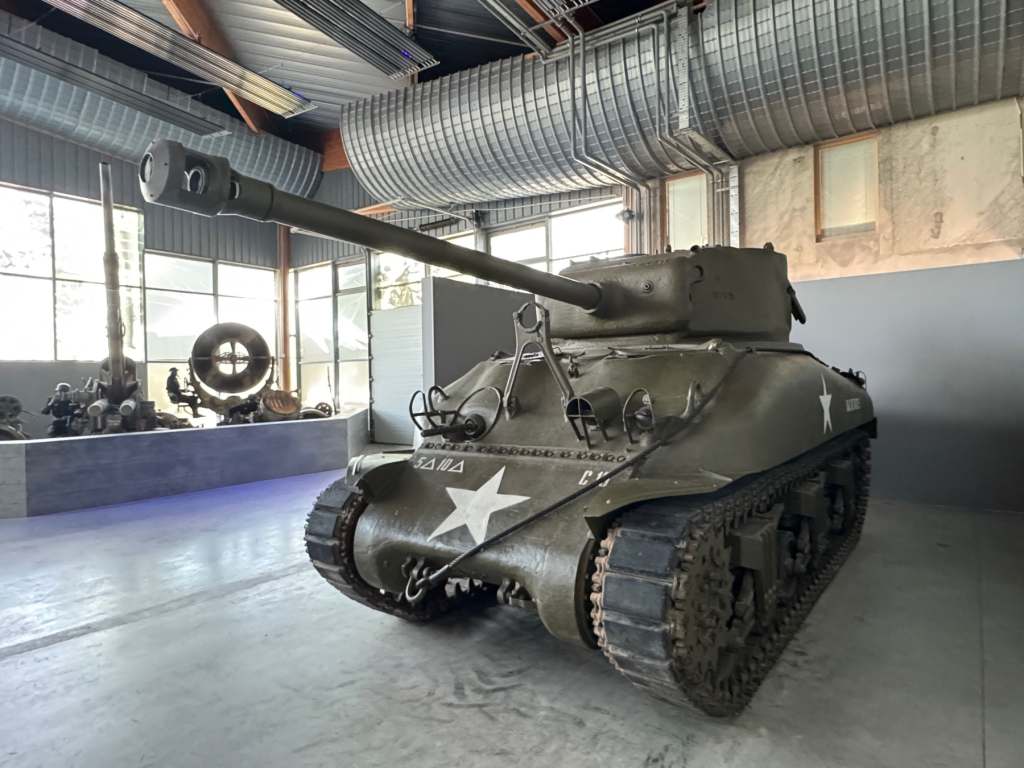
On our onwards drive towards Lens, where we will conclude our journey through France, we pass through St Marcel, another stone-built village where a 12th-century church stands like a sentinel to a slower age.
There is something quietly satisfying about how the French Ardennes delivers nothing perfectly. No crowds. No queues. Just myth, memory, metal and meaning — hidden in a landscape that is spectacularly beautiful. Ennui, yes. But in the most satisfying sense of the word.
Further Information on the French Ardennes
To get further inspiration on what to do in the French Ardennes, visit the official tourism website.
DFDS Ferries
Our return ferry to France was with DFDS, from Dover to Calais and back again. We opted for priority boarding and the premium lounge, which is ideal if travelling with an elderly companion. Once we arrived in Dover we decided to sail to Dunkirk instead, and the staff arranged this without hesitation, speeding up our overall journey time. As always the sailing was comfortable and all too brief.
